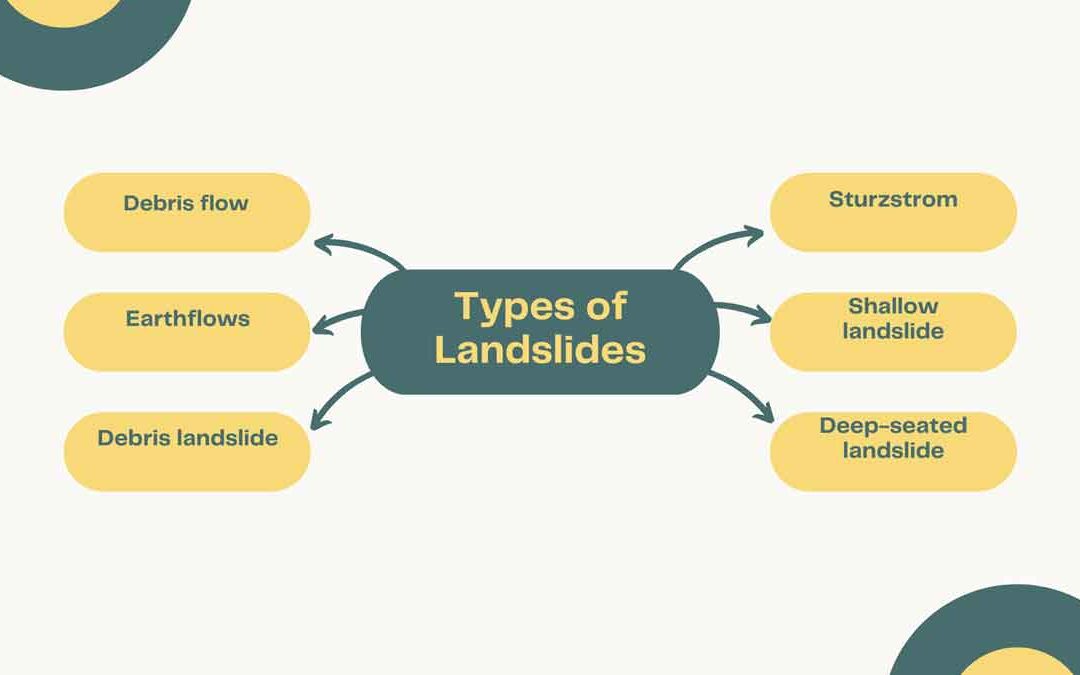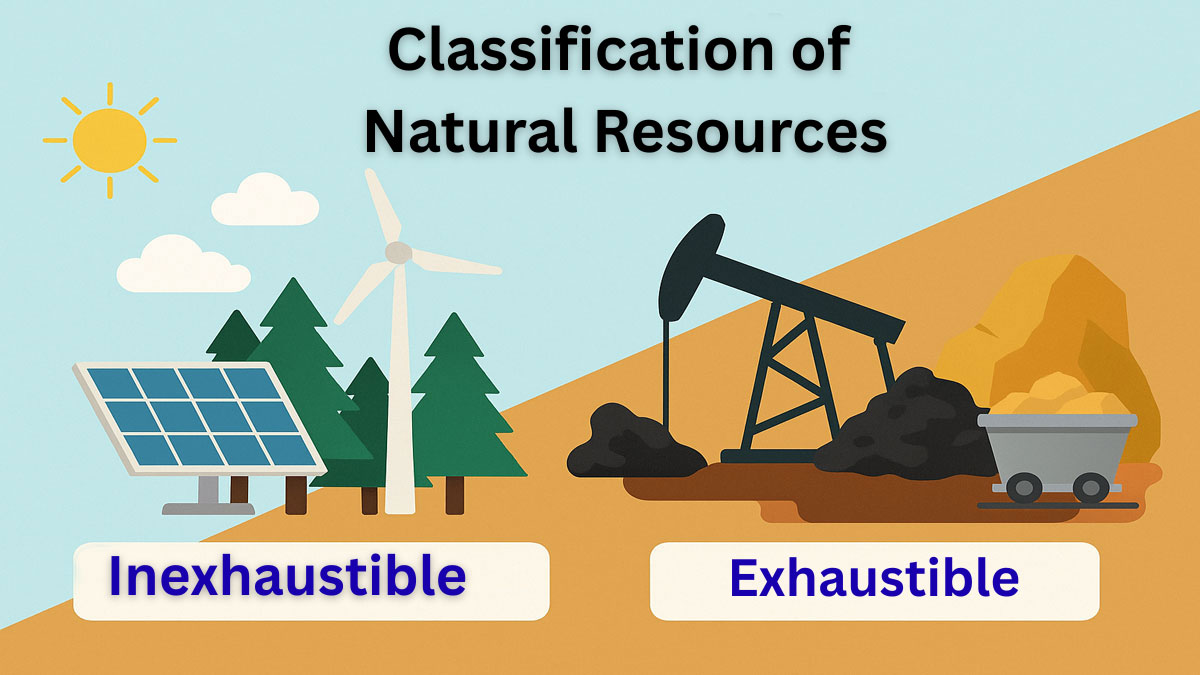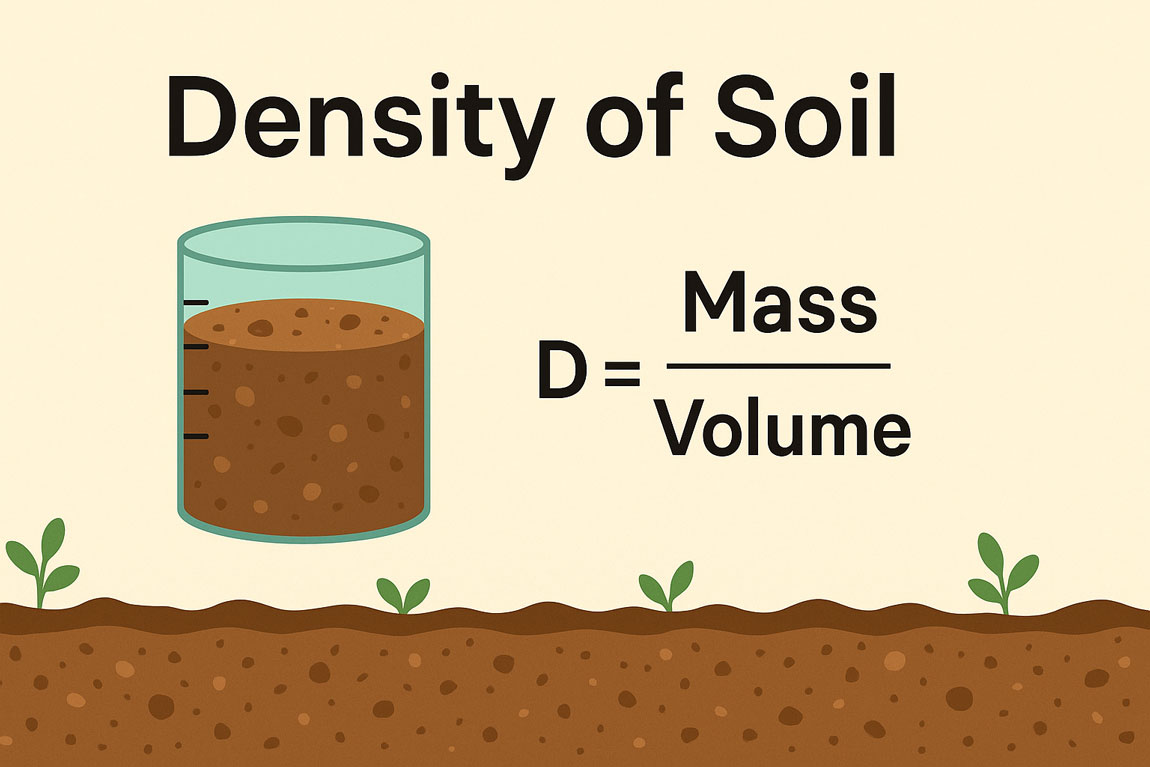Landslides are powerful natural events where soil, rock, and debris suddenly move downhill. They can be slow or dangerously fast, triggered by rain, earthquakes, or human activity. In this post, we’ll explore the different types of landslides from destructive debris flows to deep-seated landslides and explain how they form, behave, and impact the environment. Understanding these movements helps us stay safer in vulnerable areas.
What are Landslides?
Landslides are geological phenomena that include a wide range of ground movements, such as rockfalls, deep failure of slopes, and shallow debris flows, which can occur in offshore, coastal, and onshore environments.
Although the action of gravity is the primary driving force for a landslide to occur, there are other contributing factors affecting the original slope stability.
Types of Landslides:
- Debris flow
- Earthflows
- Debris landslide
- Sturzstrom
- Shallow landslide
- Deep-seated landslide
Debris flow:
- Debris flows are geological phenomena in which water-laden masses of soil and fragmented rock rush down mountainsides, funnel into stream channels, entrain objects in their paths, and form thick, muddy deposits on valley floors.
- Slope material that becomes saturated with water may develop into a debris flow or mud flow.
- The resulting slurry of rock and mud may pick up trees, houses and cars, thus blocking bridges and tributaries causing flooding along its path.
Earthflows:
- An earthflow is a downslope viscous flow of fine-grained materials that have been saturated with water and move under the pull of gravity.
- The types of materials that are susceptible to earthflows are clay, fine sand and silt, and fine-grained pyroclastic material
- Typically, they can move at speeds from 0.17 to 20 km/h.
- The velocity of the earthflow is dependent on how much water content is in the flow itself: if there is more water content in the flow, the velocity will be higher.
- Earthflows occur much more during periods of high precipitation, which saturates the ground and adds water to the slope content.
Debris landslide:
- A debris slide is a type of slide characterized by the chaotic movement of rocks soil and debris mixed with water or ice (or both).
- They are usually triggered by the saturation of thickly vegetated slopes which results in an incoherent mixture of broken timber, smaller vegetation and other debris.
- Debris avalanches differ from debris slides because their movement is much more rapid. This is usually a result of lower cohesion or higher water content and commonly steeper slopes.
Sturzstrom:
- A sturzstrom (German word composed of Sturz (fall) and Strom (stream)) is a unique type of landslide consisting of soil and rock which has a great horizontal movement when compared to its initial vertical drop — as much as 20 or 30 times the vertical distance.
- By contrast a normal landslide will typically travel a horizontal distance that is less than twice the distance that the material has fallen.
- Sturzstroms flow across land fairly easily, and their mobility increases when volume increases. They have been found on other bodies in the Solar System, including the Moon, Mars, Venus, Io, Callisto.
Shallow landslide:
- Landslide in which the sliding surface is located within the soil mantle or weathered bedrock (typically to a depth from few decimetres to some metres)is called a shallow landslide.
- They usually include debris slides, debris flow, and failures of road cut-slopes. Landslides occurring as single large blocks of rock moving slowly down slope are sometimes called block glides.
Deep-seated landslide:
- Landslides in which the sliding surface is mostly deeply located below the maximum rooting depth of trees (typically to depths greater than ten meters).
- Deep-seated landslides usually involve deep regolith, weathered rock, and/or bedrock and include large slope failure associated with translational, rotational, or complex movement.
- These typically move slowly, only several meters per year, but occasionally move faster. They tend to be larger than shallow landslides and form along a plane of weakness such as a fault or bedding plane. They can be visually identified by concave scarps at the top and steep areas at the toe.






